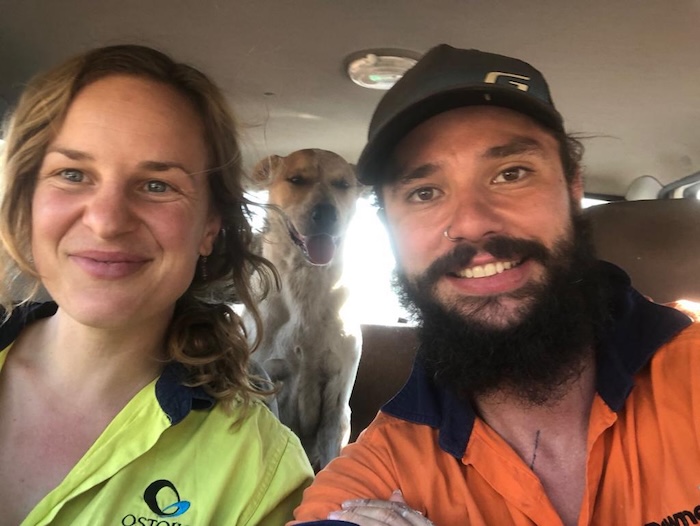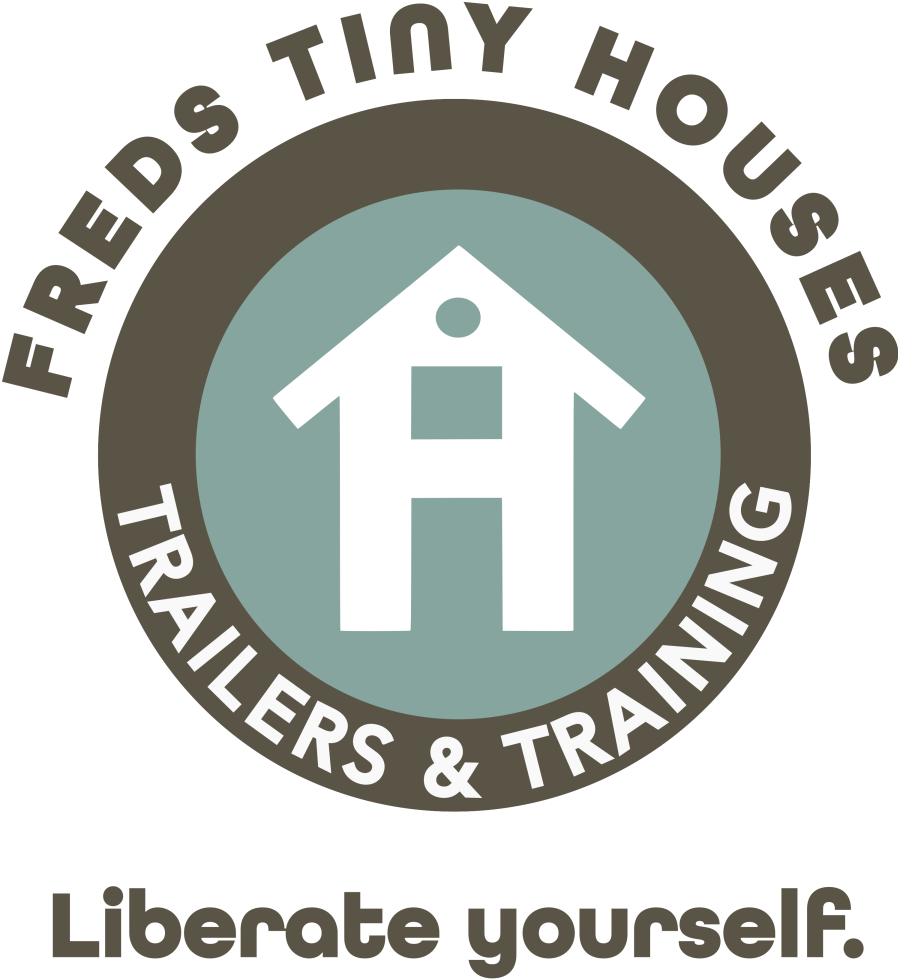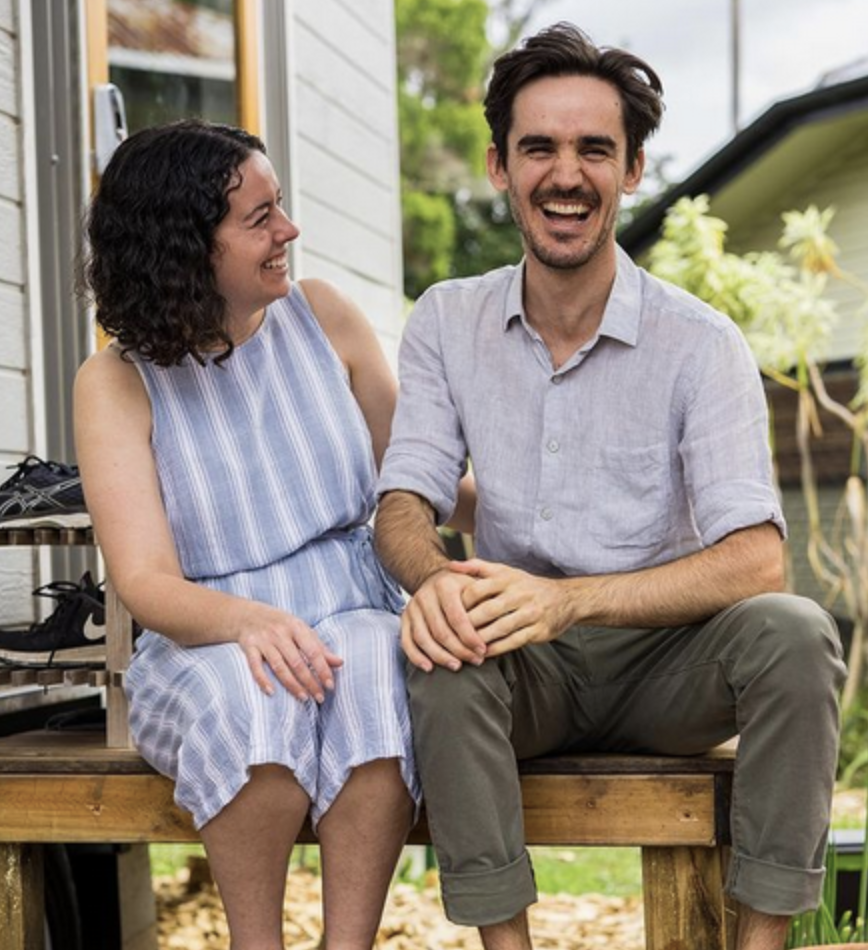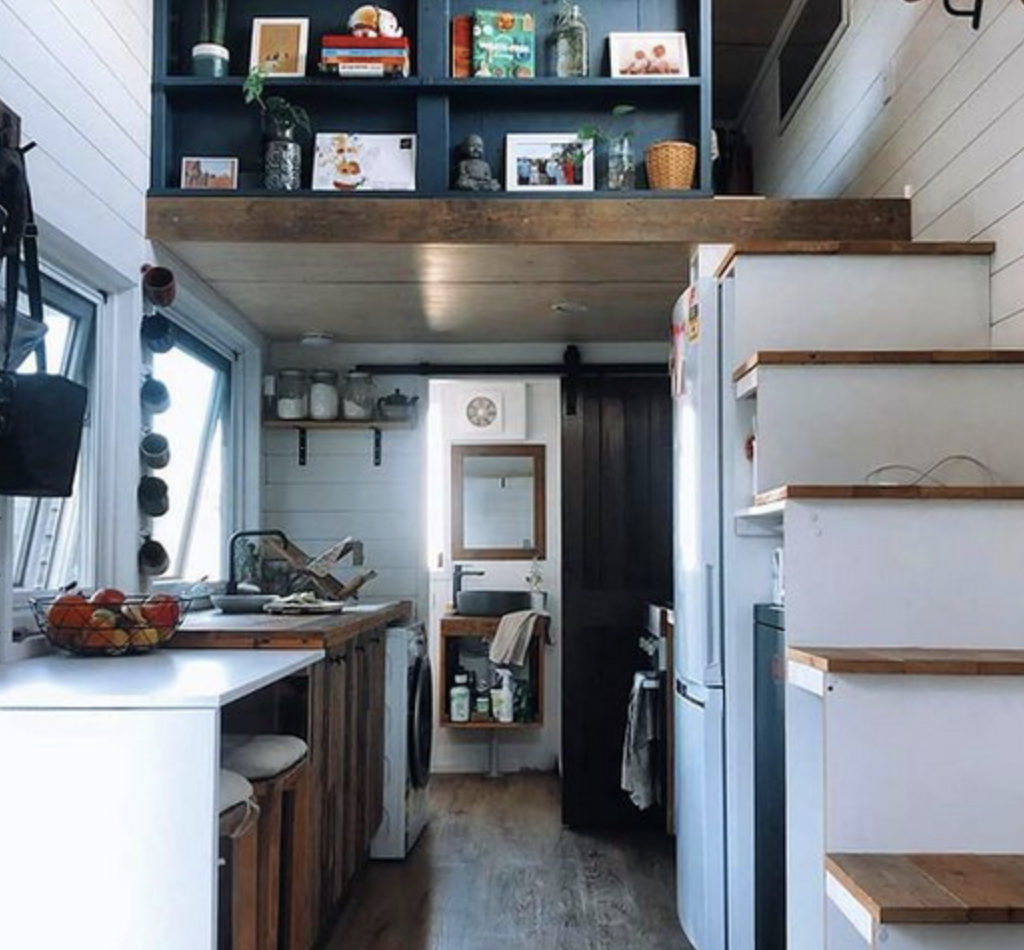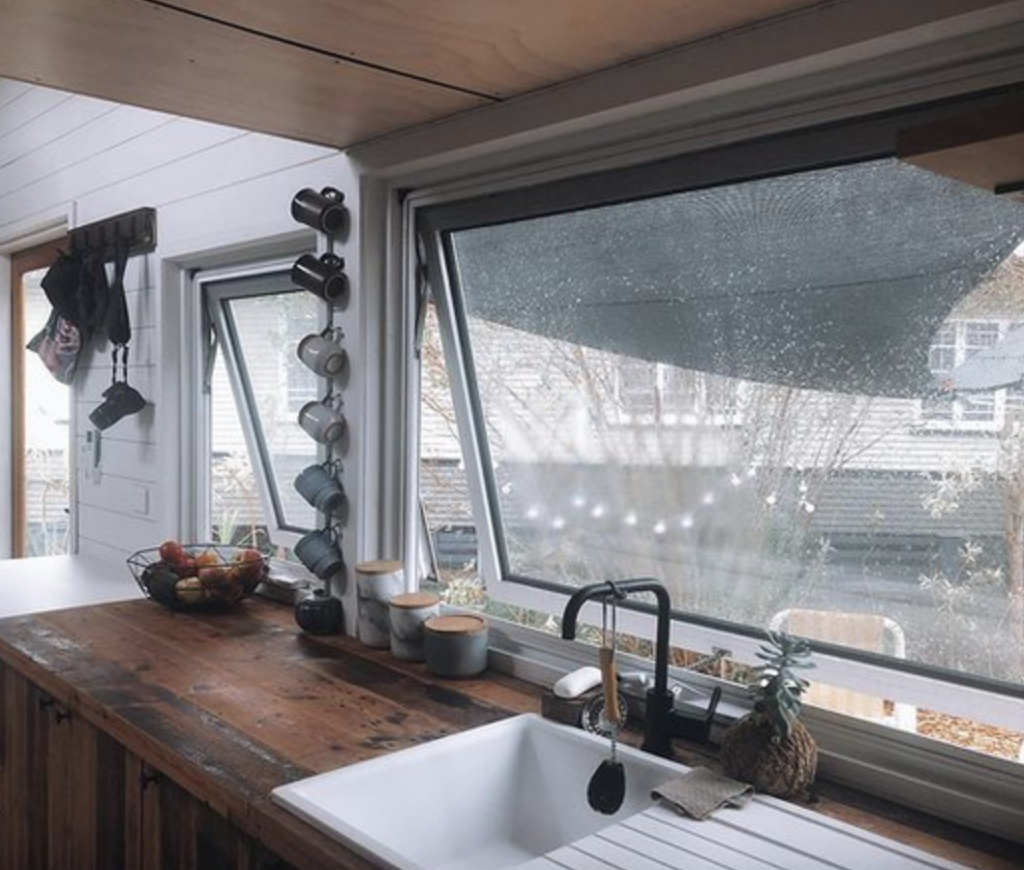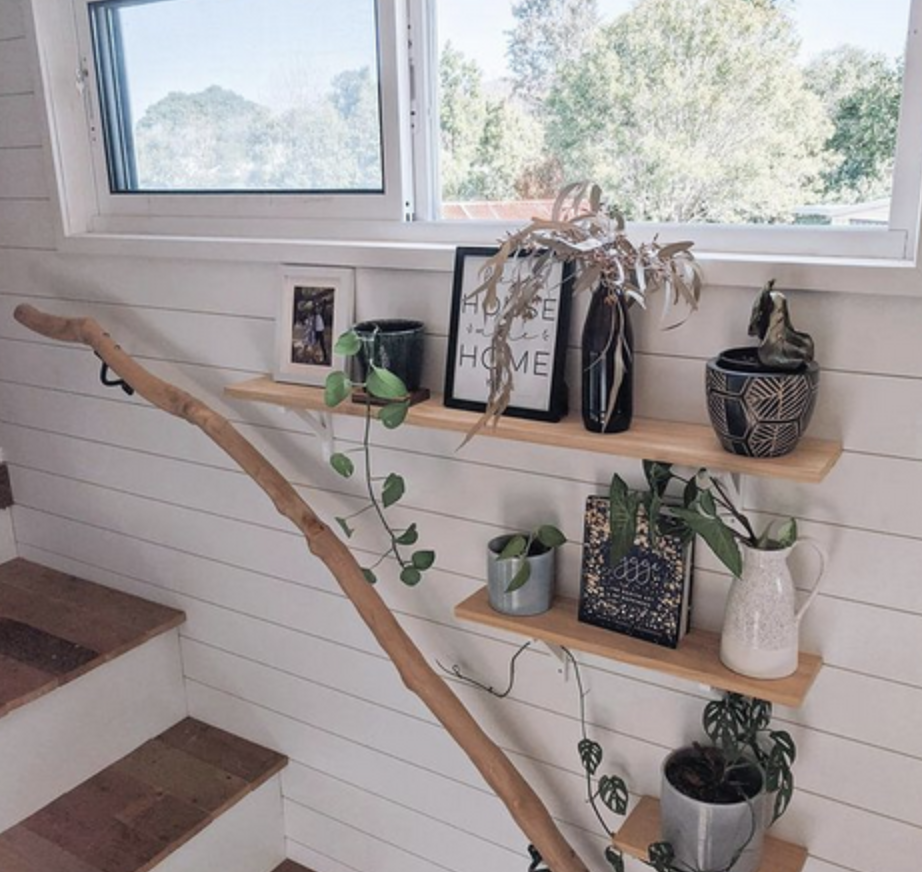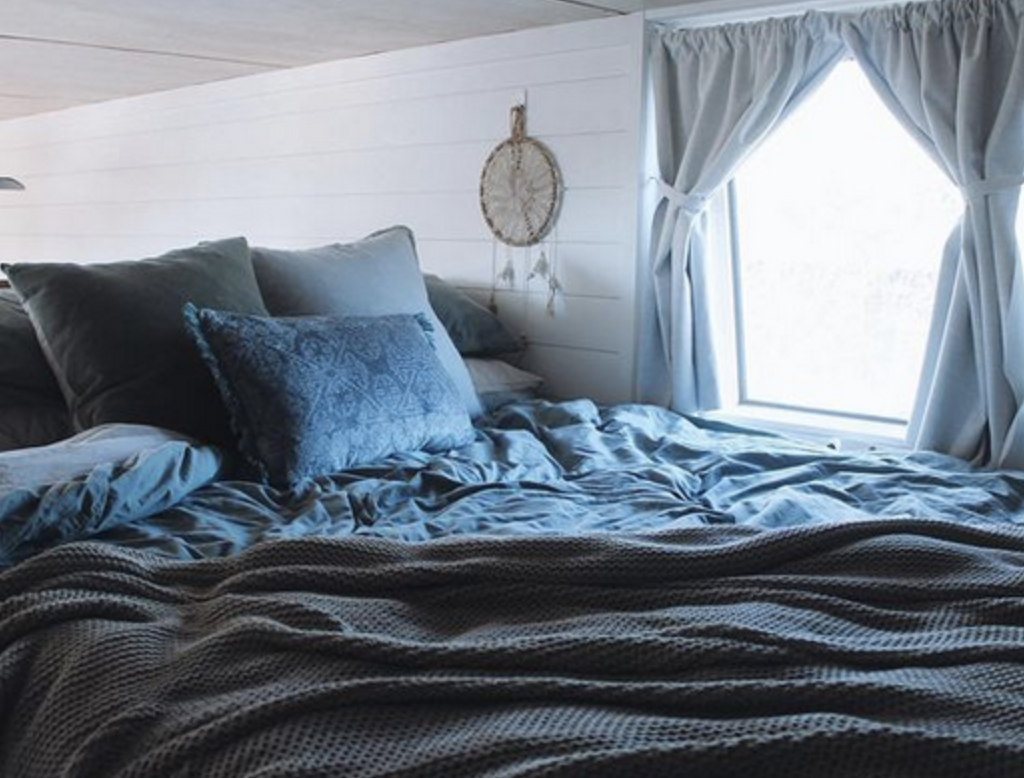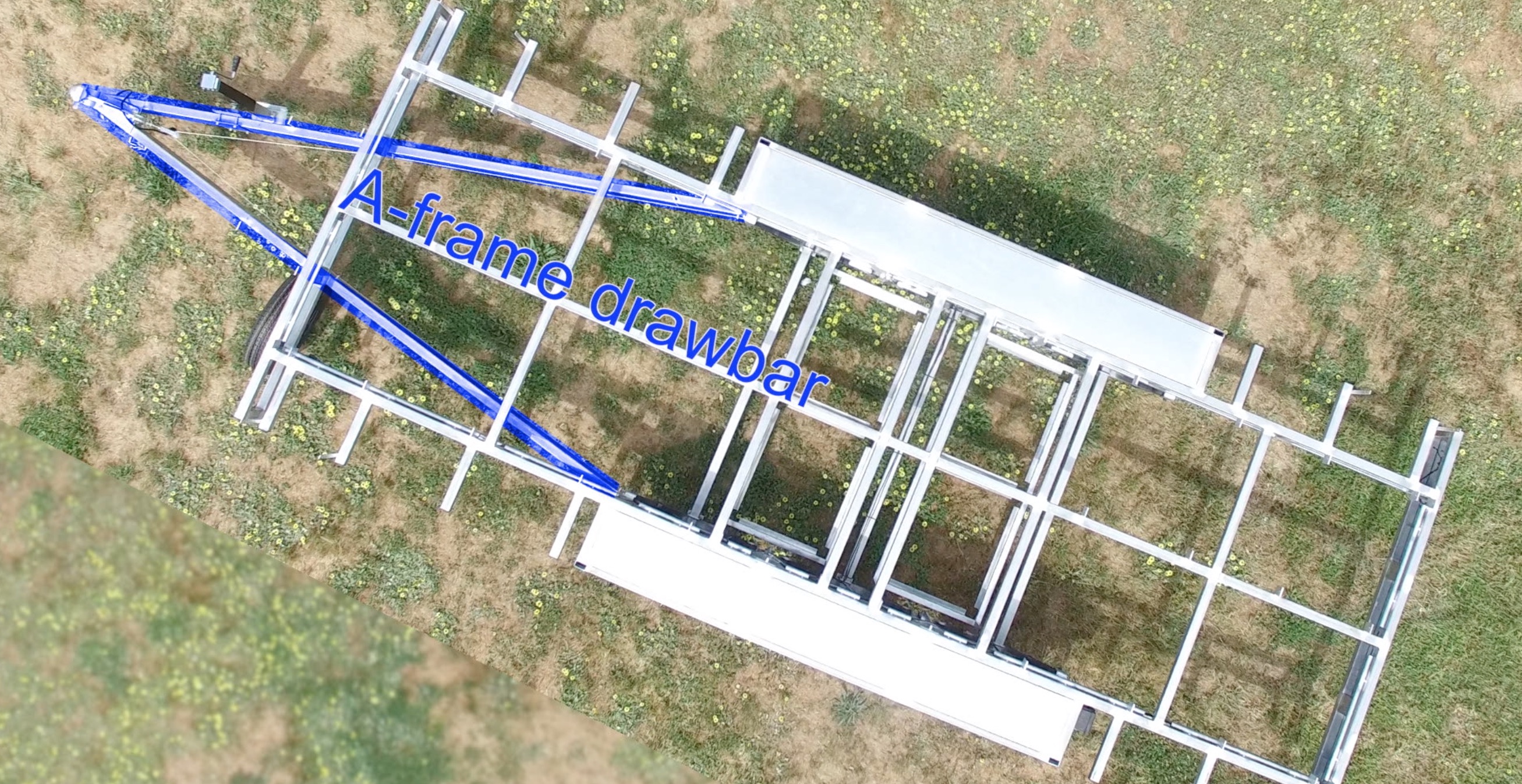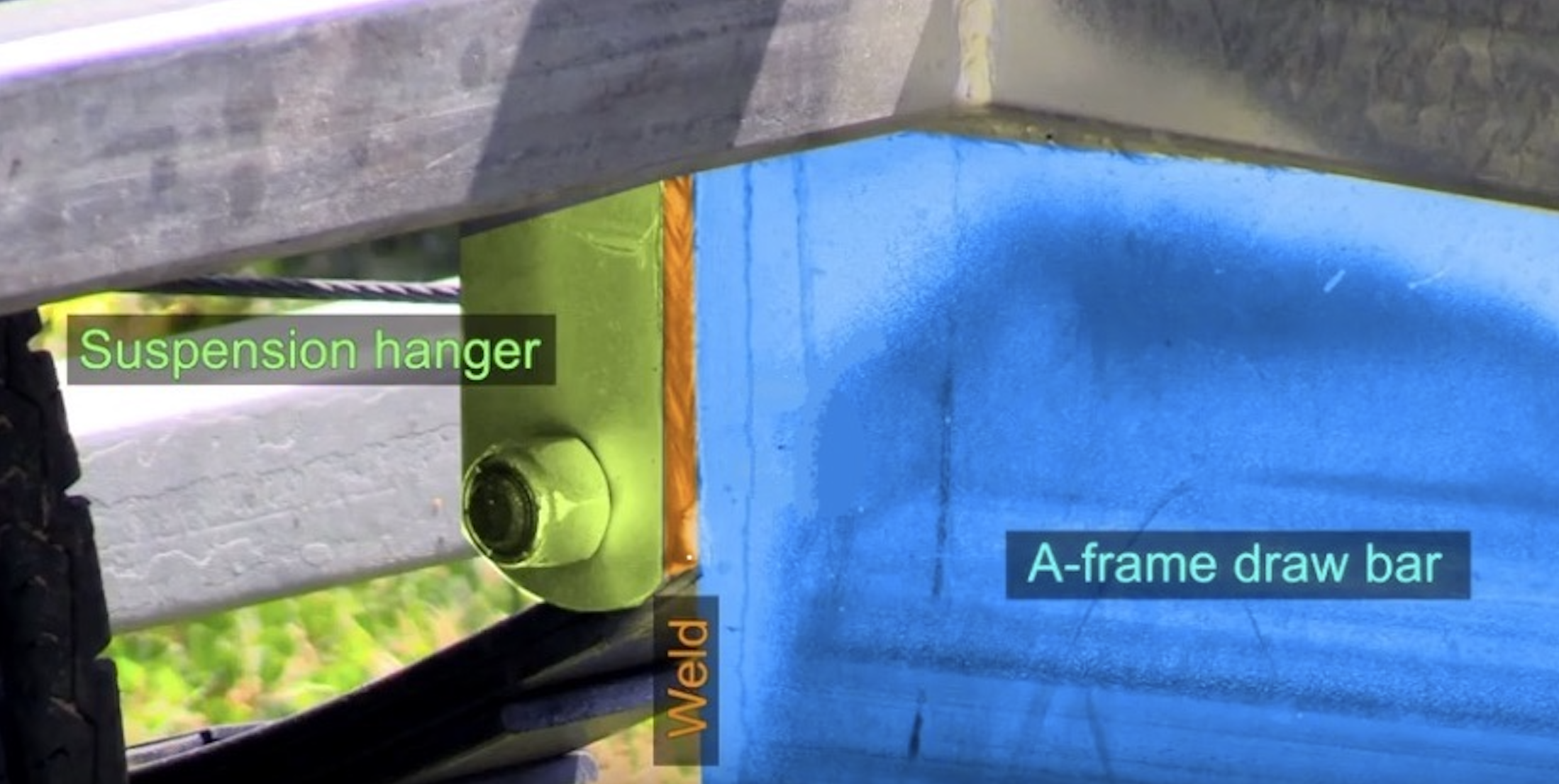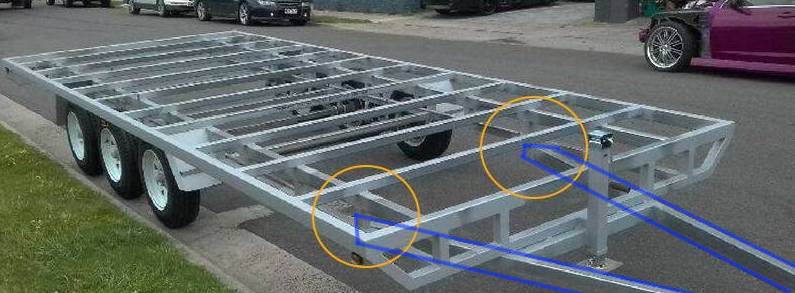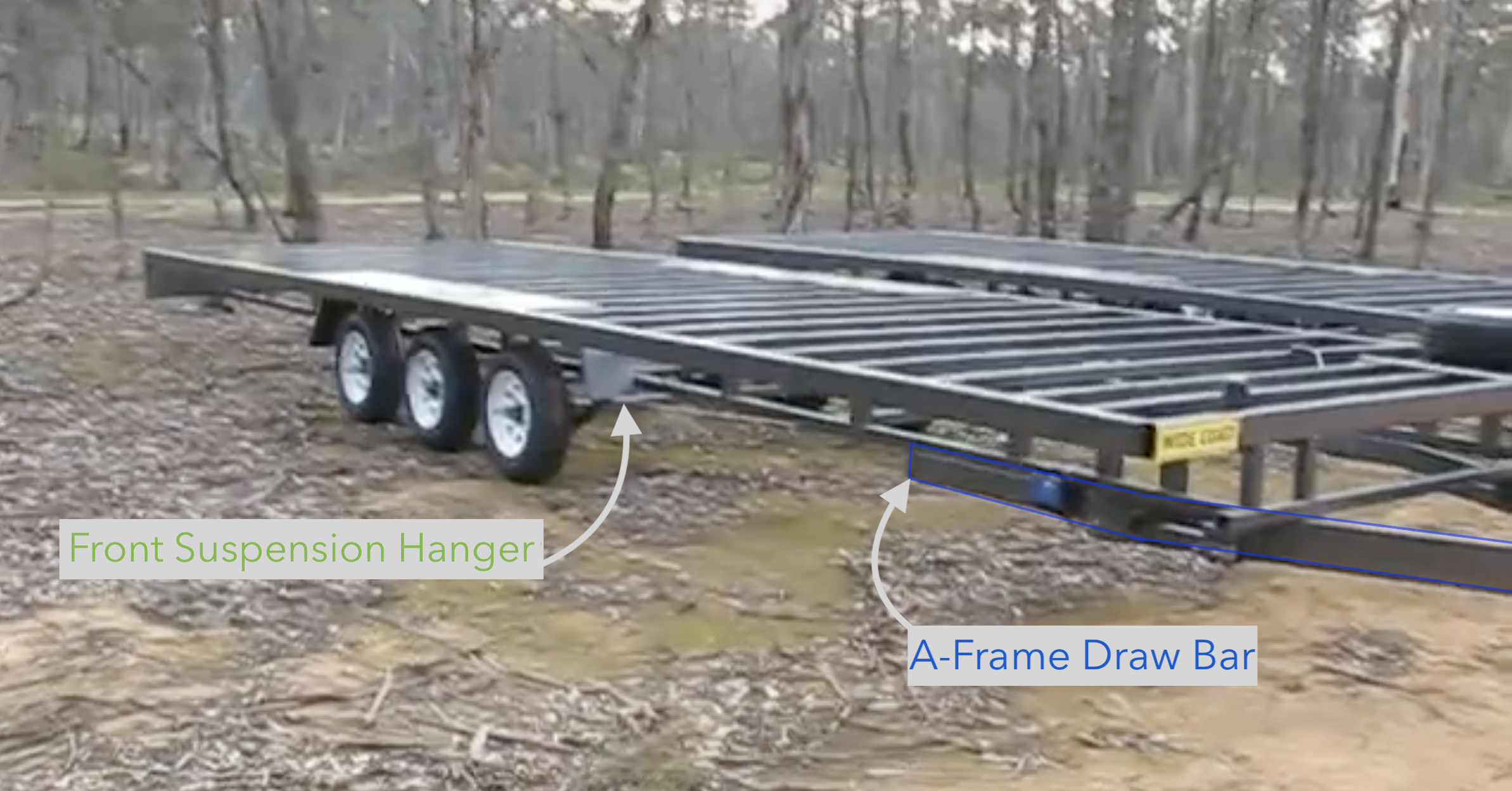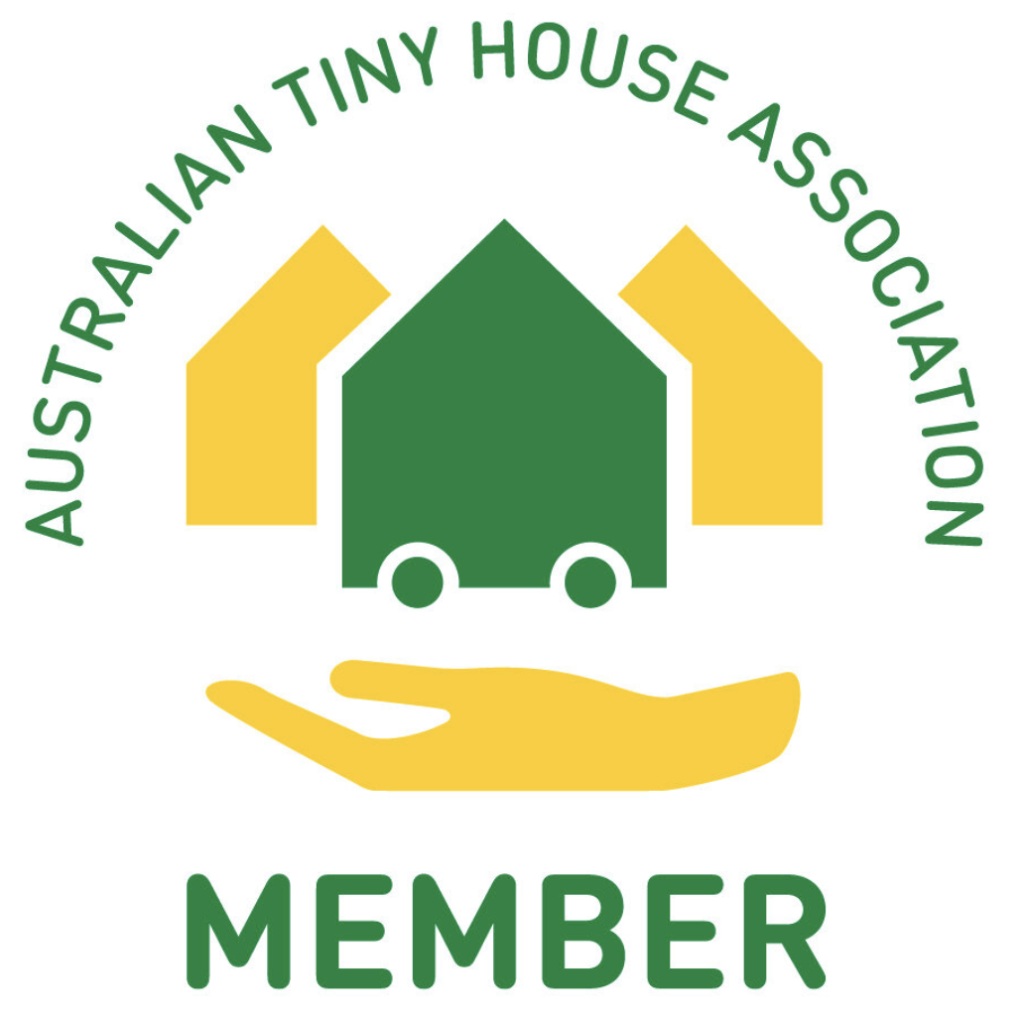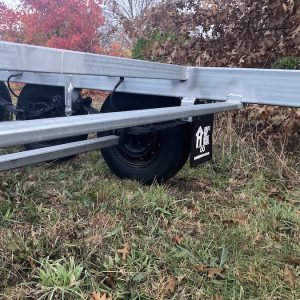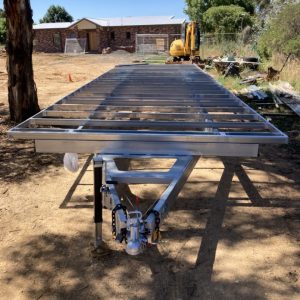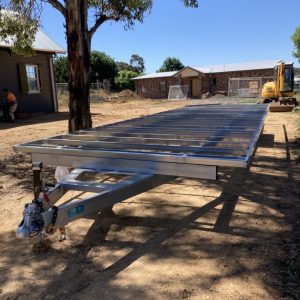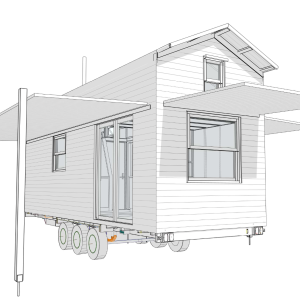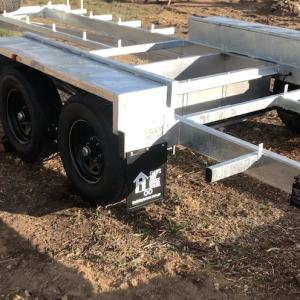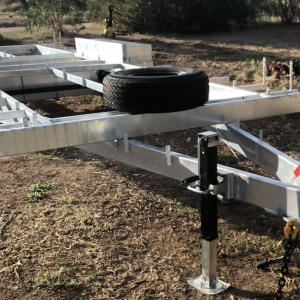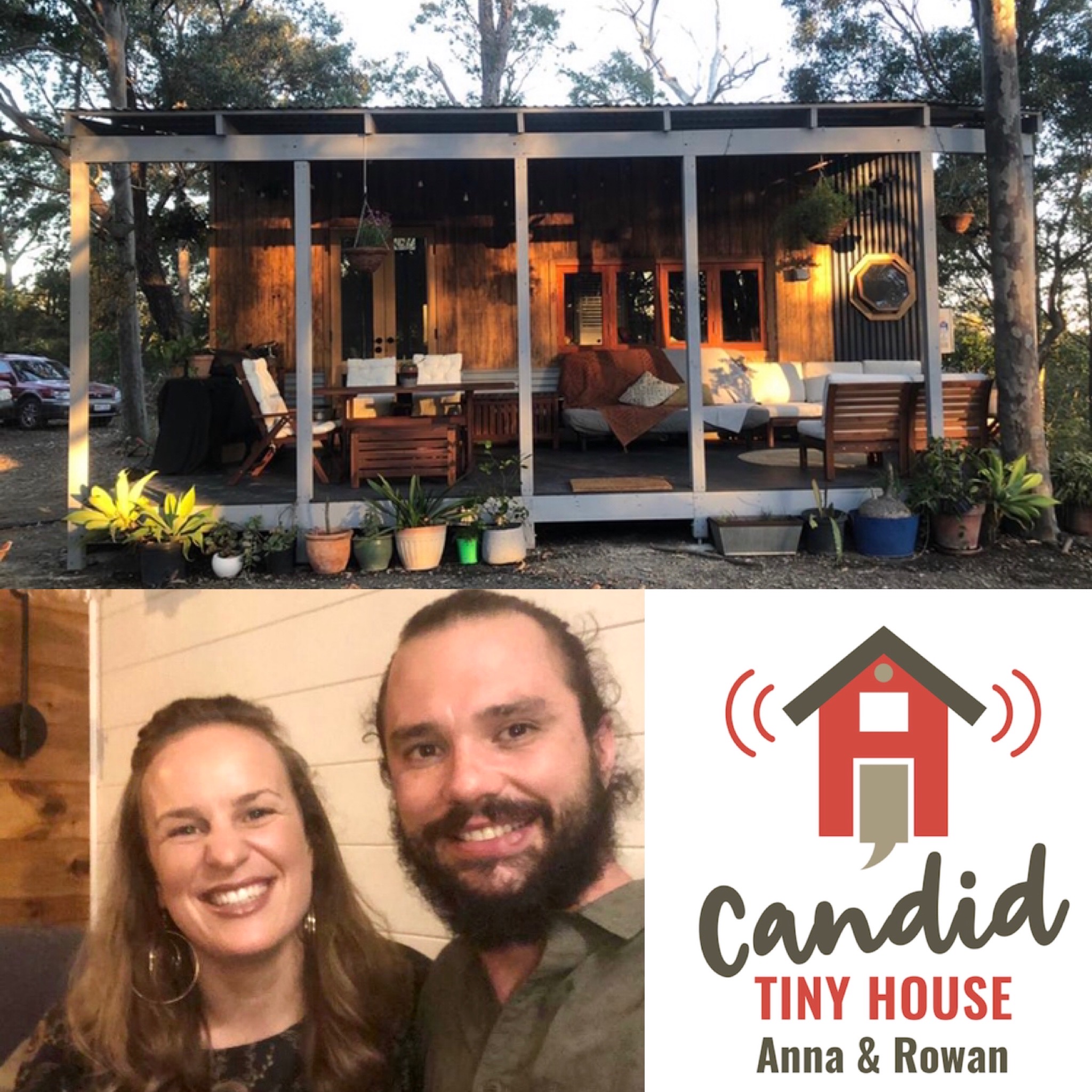
Anna & Rowan E5, S1 Candid Tiny House Podcast

Building a Tiny House Together: Anna & Rowan’s Story
When people think about the risks of building a tiny house, a few big ones usually come to mind:
Hostile council regulations that can leave you feeling defeated.
Shoddy building techniques that can cause long-term damage.
Poor design choices that make the space unliveable.
Budget blow-outs that stall the project and drain savings.
These risks are well known. But there’s another one, less talked about, yet just as important: the risk of losing your relationship. Building a home together—especially one on wheels—can stretch couples physically, emotionally, mentally and financially. And once the house is built, adjusting to life in such a small space can be another test entirely.
That’s why Anna and Rowan’s story is so encouraging. Their journey of building a DIY, off-grid tiny house on wheels in Canberra, towing it up to Newcastle, and settling into tiny living isn’t just about logistics, insurance, or weight management (though they faced all of those challenges too). At its heart, their story is about how building a tiny house together actually brought them closer as a couple.
Fast-Tracking a Relationship
When Anna and Rowan bought their Fred’s Tiny Houses Trailer, they’d only been together for eight months. For most couples, that’s still the “figuring each other out” stage. But committing to a build project of this scale fast-tracked everything.
“It totally fast-tracked our relationship,” Anna said. “We got to know each other very well, very quickly.”
Rowan agreed: “I think it was really good for us to build together because it helped us learn to communicate more clearly. We’ve gotten more experience as a couple, as opposed to if we hadn’t built the tiny house.”
Building a Tiny House, Building Communication
The couple worked on their house nearly every day for a year. Like all builders, they faced injuries, long hours, weight and budget stresses, and the nerve-wracking process of transporting the finished home. Yet instead of letting the stress wear them down, they used the project as a way to practice repairing and reconnecting.
“There’ll be intense moments in building,” Anna explained. “Then sometimes we’ll come out afterwards and be like, ‘Sorry, I was a little bit short with you.’ ‘It’s okay, so was I.’”
Rowan added, “I think we’re really good at that, knowing that we were getting a bit intense in the moment and then apologising afterwards.”
Sometimes their repair moments were even playful. “Ro has this really nice thing,” Anna laughed, “where when we bring things up confrontationally, at the end he’s like, ‘Are we still friends?’ And I say, ‘Yeah we’re still friends,’ and we hug it out.”
Shared Vision, Shared Strength
Another stroke of good fortune: Anna and Rowan discovered they shared the same vision for design and aesthetics. “That made it easier for us to build together,” Rowan said. Instead of clashing over style or layout, they found alignment—and that kept the project moving.
By the time they moved in, both agreed their relationship had only grown stronger. “I think we’re definitely stronger for it,” Rowan said. “A hundred percent!” Anna added. “Building a tiny house together is a huge test, and I think it can make or break a couple for sure.”
The Takeaway
Anna and Rowan’s story is proof that building a tiny house isn’t just about nails, trailers, and insulation. It’s about resilience, teamwork, and the kind of communication skills that can hold a couple together in the toughest of times.
If you’re considering building your own tiny house—especially with a partner—their story is one to take heart from. Yes, it’s stressful. Yes, there are risks. But if you approach the build with openness, patience, and the willingness to repair, it can also be one of the most rewarding experiences of your life.
🎧 Hear more: Listen to their full interview on the Candid Tiny House Podcast (available on your favourite podcast app) for insights on building, transporting, and living in a tiny house together.
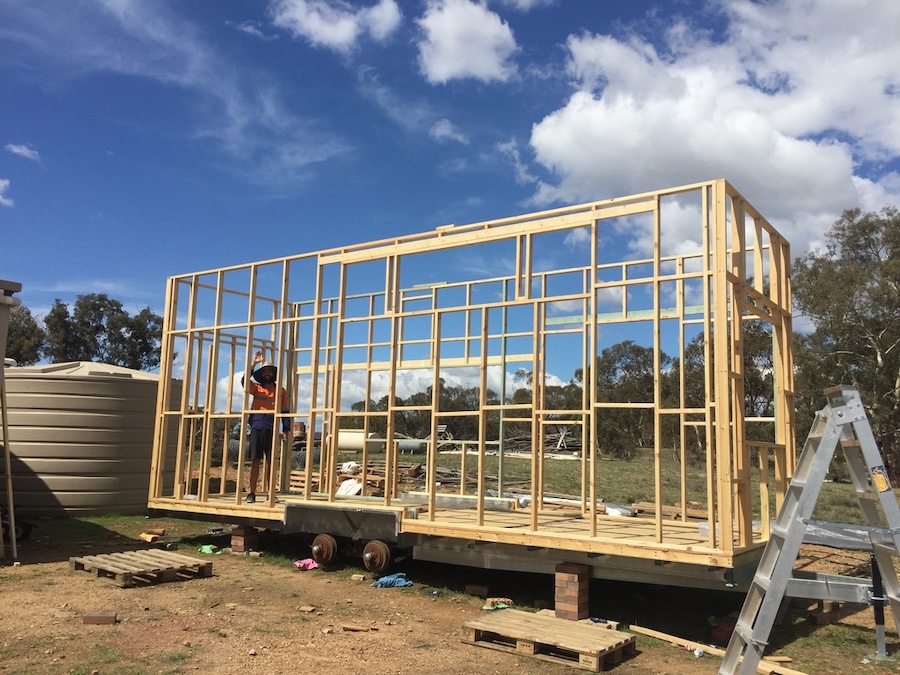

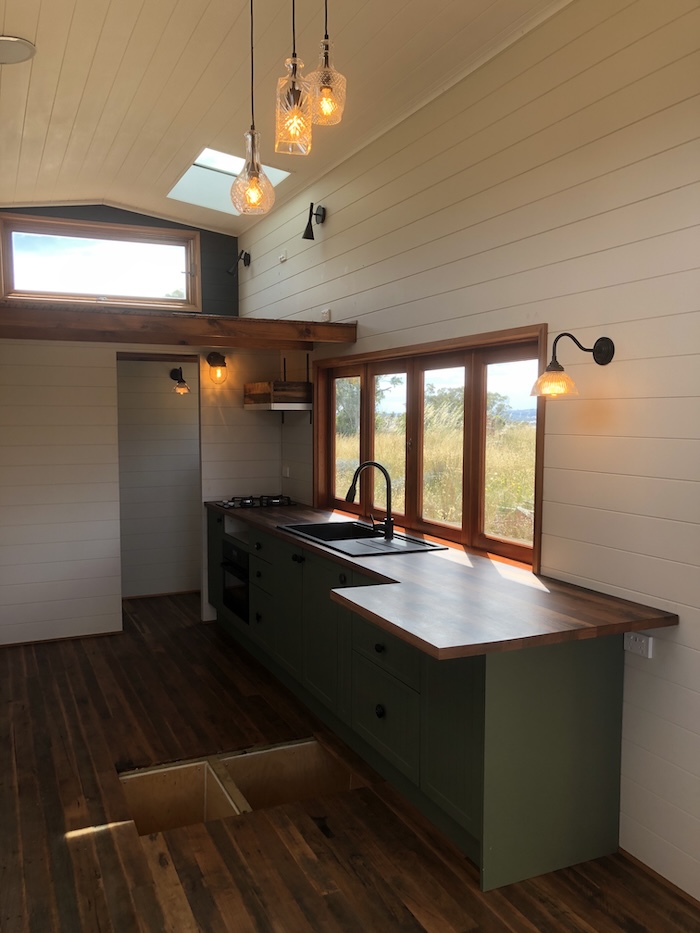
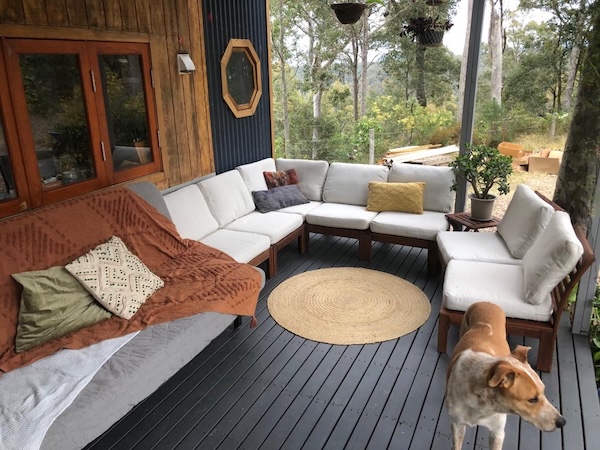
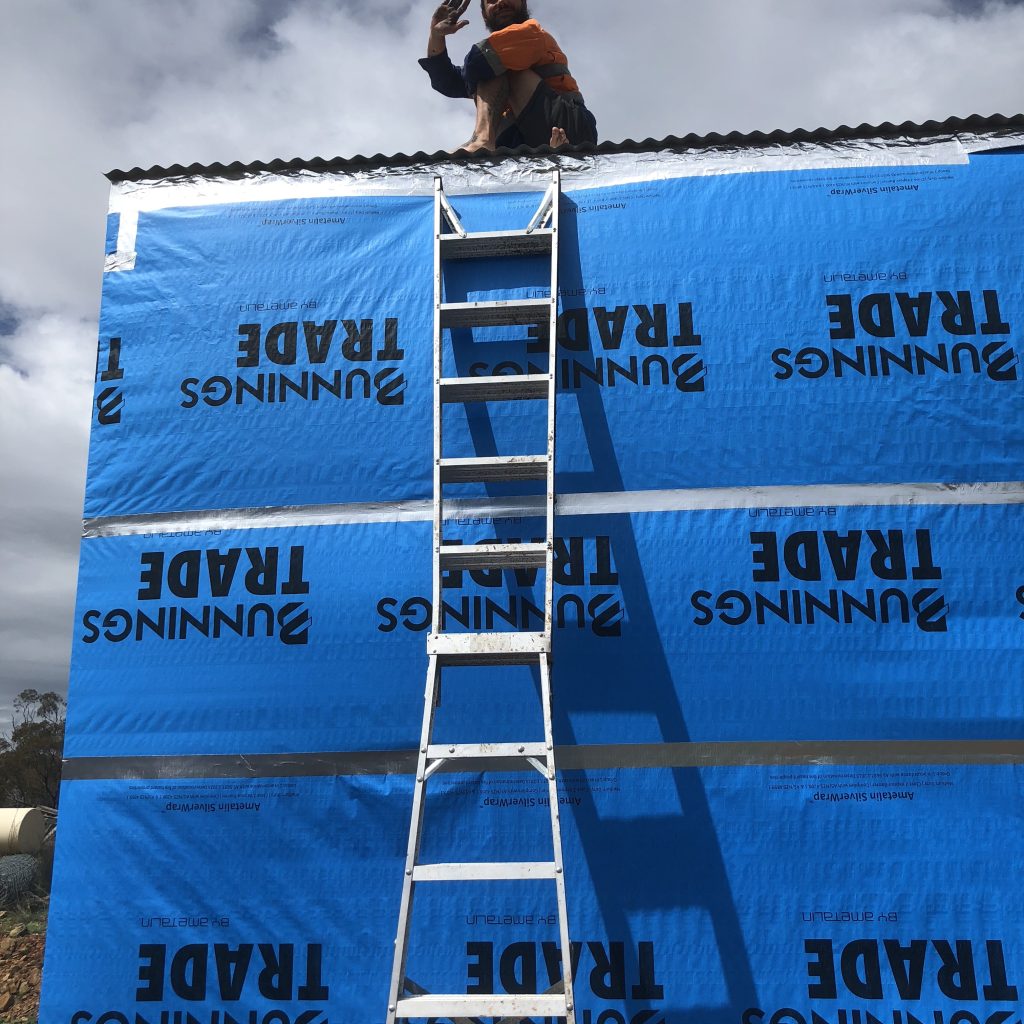
Trailer Details
Length: 7.8m
Width: 2400mm
Style: Protruding Wheel Guard DuraGal Finish
Trailer received: September 2019
Build started: January 2020
Move-in date: August 2021
You can do this too!
Anna and Rowan started their tiny house building journey by attending a Weekend Workshop with Fred’s Tiny Houses.
They took all the knowledge that they gained in that course and bought a Fred’s Tiny House Trailer. They then built a successful tiny house which they continue to live!
Start here:
